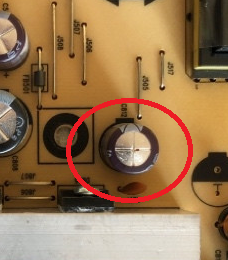I have this old LG Flatron w1934s that worked fine until it‘s power indicator led started flashing, and after a long while the monitor turned then on, if I heated the monitor’s back with something like a heat gun it started after a few seconds! While the starting process is going it is possible to head a switching mood from the monitor’s PCB, a sound that during operation is not present! I took the monitor apart and tested the voltages on the backlight lamps, I found one, top right in the picture, to have a lower DC voltage than the others at startup, and an equal one during operation...I also tested how log the monitor took to start depending on the zones I heated in the PCB, the two mosfet’s heatsink, if heated, is the fastest one to make it start!
My question is if it’s most likely a bad joint problem, that a resoldering could fix, or what else can I look into?





